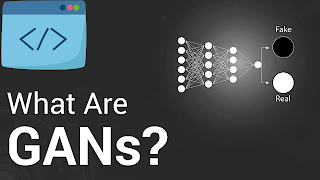Generative Adversarial Networks (GANs) are a type of deep learning model that are used to generate new, previously unseen data that is similar to the data it was trained on. GANs consist of two main components: a generator and a discriminator. The generator creates new data, while the discriminator attempts to distinguish the generated data from real data. The generator and discriminator are trained in a competitive manner, with the generator trying to produce data that can fool the discriminator, and the discriminator trying to correctly identify the generated data as fake. Through this process, the generator learns to produce more realistic data, and the discriminator becomes more adept at identifying fake data. GANs can be used for a variety of tasks, such as image generation, text generation, and even video generation. They have been used to generate new images of faces, animals, and even entire scenes that are indistinguishable from real photographs. They are also being used in various fields such as computer vision, natural language processing and Robotics. It's important to note that GANs are still a relatively new and rapidly developing field, and there are many open research questions and challenges that remain to be addressed.
GANs have been used in a variety of applications such as:
Image generation: GANs can be used to generate new images of faces, animals, and even entire scenes that are indistinguishable from real photographs.
Text generation: GANs can be used to generate new text that is similar to a given input text.
Video generation: GANs can be used to generate new videos that are similar to a given input video.
Super-resolution: GANs can be used to increase the resolution of an image or video.
Anomaly detection: GANs can be used to detect unusual or abnormal data points.
Data imputation: GANs can be used to fill in missing values in a dataset.
Improving the performance of other machine learning models: GANs can be used as a pre-training step for other machine learning models to improve their performance.
However, GANs are not without their limitations and challenges. One of the main challenges with GANs is that the generator and discriminator can become stuck in a suboptimal equilibrium, where the generator produces poor quality data and the discriminator is unable to distinguish it from real data.
Additionally, GANs can be difficult to train and require large amounts of data and computational resources.
Despite these challenges, GANs continue to be an active area of research and development, with new techniques and architectures being proposed to address these issues and improve the performance of GANs.




